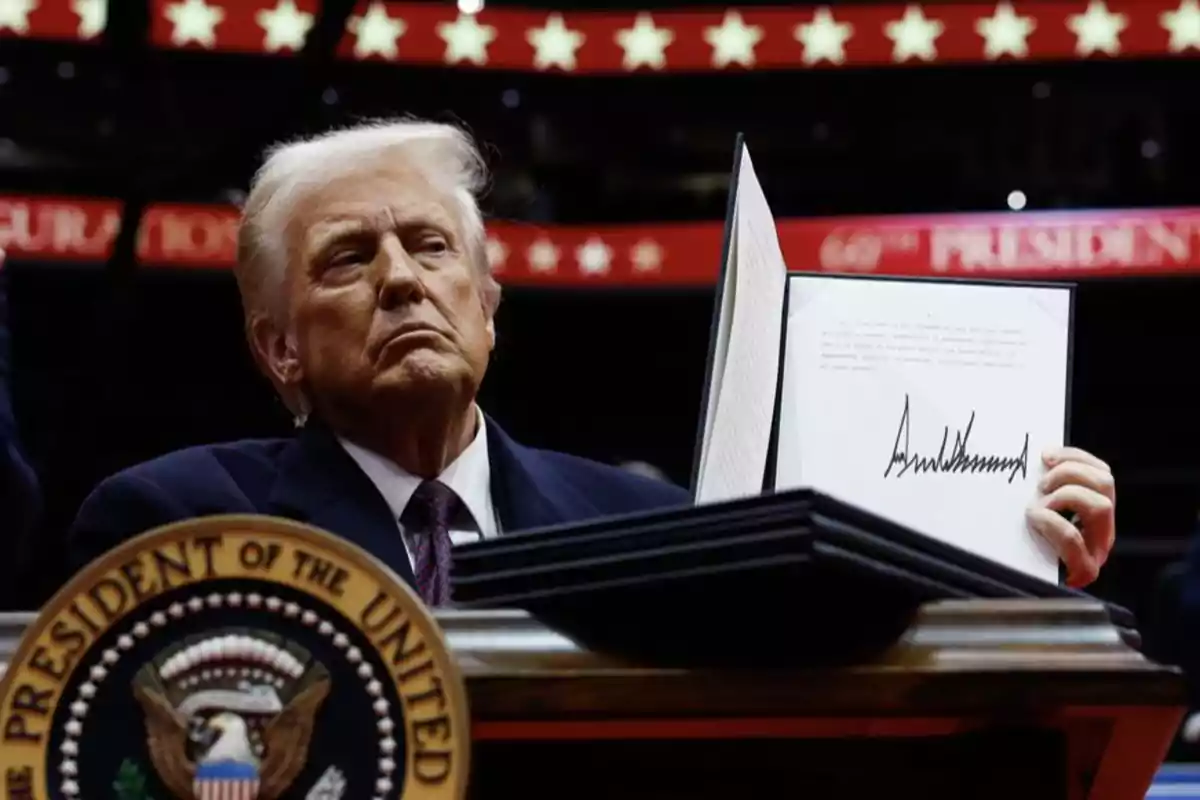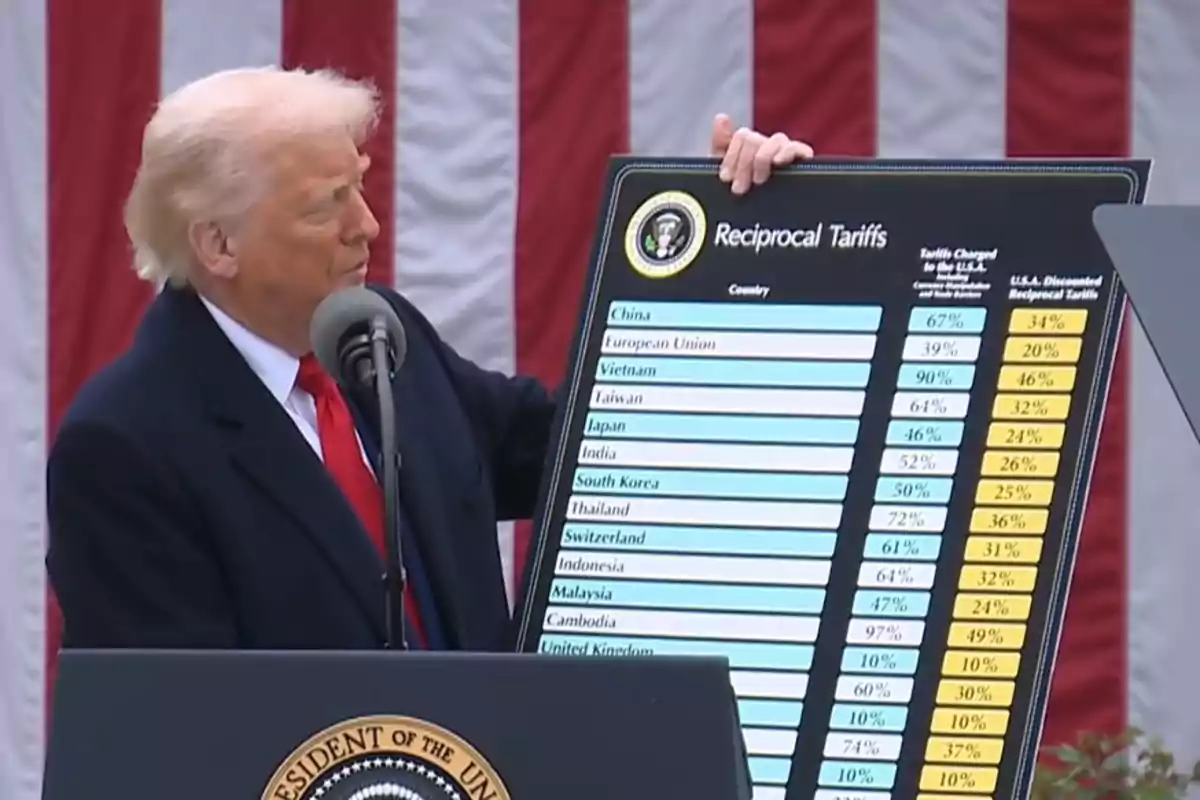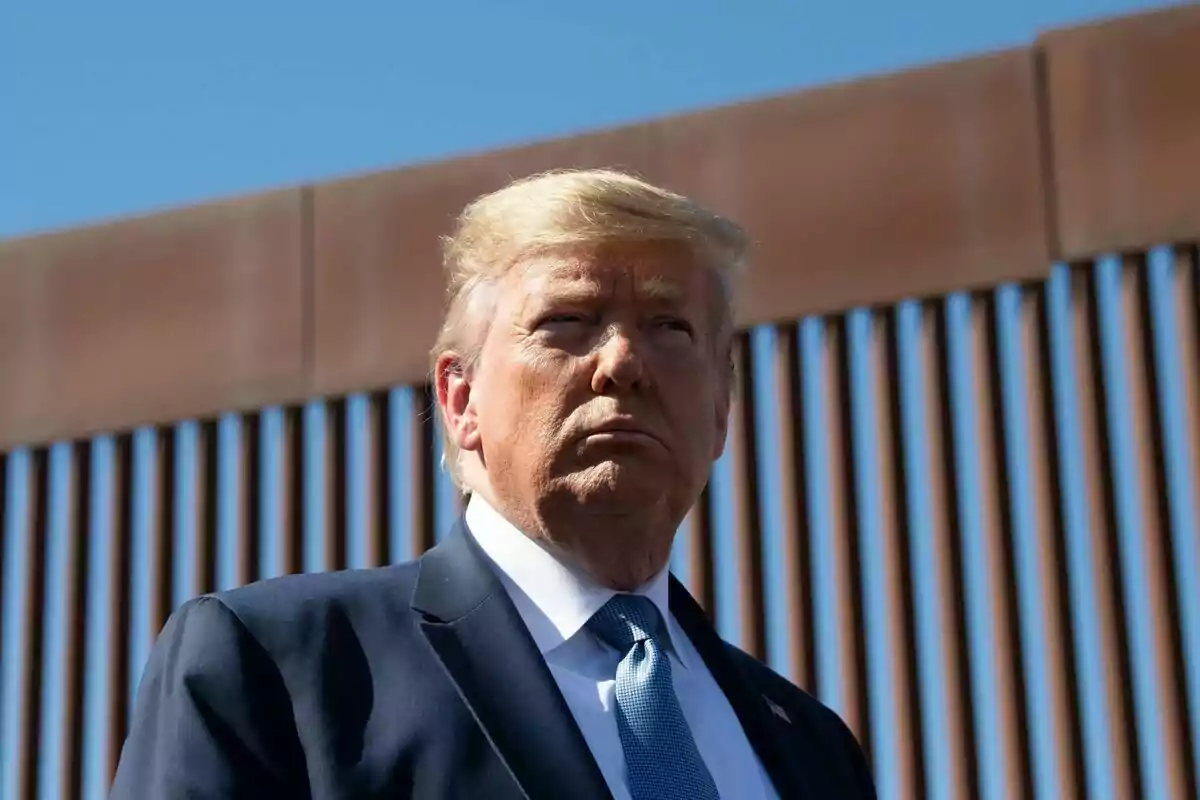
Donald Trump announced the increase of tariffs on a series of countries
The US government sent letters to the respective countries. The tariffs will take effect on August 1
President Donald Trump began a new phase of his trade strategy by sending the first letters to countries warning of the imposition of higher tariffs, including a 25% levy on products imported from Japan and South Korea, set to take effect on August 1.
Additionally, the president included Malaysia and Kazakhstan in the measure, which will also face a 25% tariff, while South Africa will be subject to a 30% tariff, and Laos and Myanmar will have to pay a 40% tax.
These actions represent the first round of notifications within what Trump described as a series of unilateral warnings and new trade agreements that would begin to be announced this Monday, in the context of the reciprocal tariffs announced by Trump on April 2.
The goal of the U.S. president is to seek equality in trade with other countries, where the United States imposes the same tariffs that other countries impose on it, whether through taxes or non-tariff barriers. "Our relationship has unfortunately been far from reciprocal," Trump stated in the letters sent to the governments involved.

White House Press Secretary Karoline Leavitt confirmed that about a dozen countries will receive similar letters directly signed by the president. She also anticipated that additional notifications will be sent in the coming days.
The new tariffs, also published on the president's Truth Social platform, are generally consistent with those he had already anticipated. Some minor adjustments, such as in the case of Laos and Myanmar, placed them just below the originally planned levels.
It is worth recalling that, after a 90-day extension of his initial "reciprocal tariffs," Trump had temporarily reduced those levies to 10% to make room for negotiations. However, few countries made progress during that period. The new initiative includes an additional extension, which will be made official through an executive order signed this Monday, extending the July 9 deadline until early August.
Leavitt clarified that this extension will benefit all nations subject to these reciprocal tariffs, even those that have not yet received the presidential notification.

In his letters, Trump also warned the countries involved not to respond with retaliation. "If for any reason you decide to raise your tariffs, then, whatever number you decide to raise them by will be added," the president warned.
He also clarified that the new rates do not include specific sectoral tariffs that his administration has already implemented or plans to apply, for example, in sensitive industries such as steel or the automotive sector, where both Japan and South Korea have a significant presence.
However, Trump offered a way out: if Japan, Korea, or their companies decide to set up plants or produce goods in the United States, the tariffs would not apply.
When asked why Trump targeted Japan and South Korea first, Leavitt simply said it was a "presidential prerogative," and emphasized that the White House is "very close" to finalizing agreements with other countries, and that Trump "wants to make sure these are the best possible agreements."
More posts: